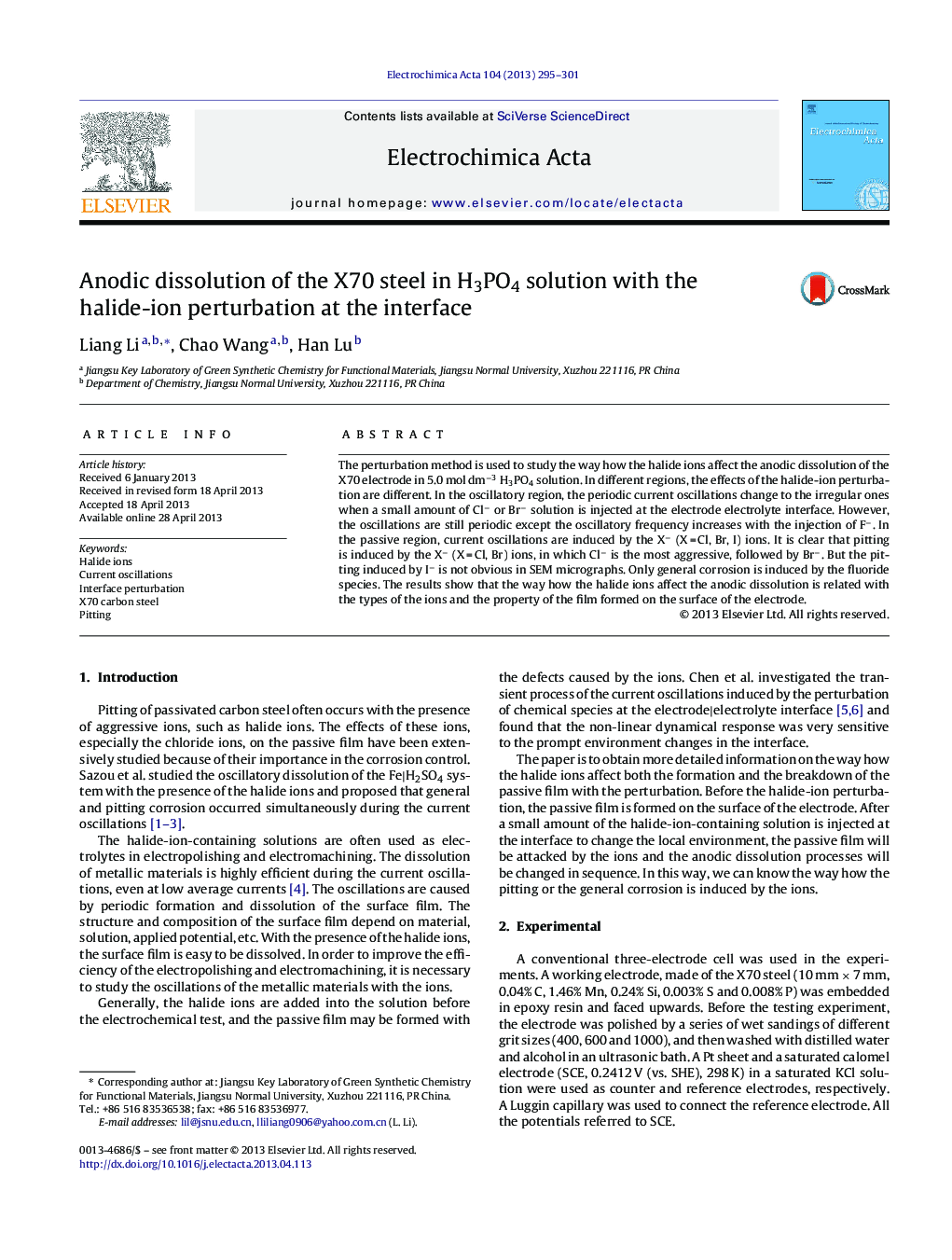| Article ID | Journal | Published Year | Pages | File Type |
|---|---|---|---|---|
| 6617917 | Electrochimica Acta | 2013 | 7 Pages |
Abstract
The perturbation method is used to study the way how the halide ions affect the anodic dissolution of the X70 electrode in 5.0 mol dmâ3 H3PO4 solution. In different regions, the effects of the halide-ion perturbation are different. In the oscillatory region, the periodic current oscillations change to the irregular ones when a small amount of Clâ or Brâ solution is injected at the electrode electrolyte interface. However, the oscillations are still periodic except the oscillatory frequency increases with the injection of Fâ. In the passive region, current oscillations are induced by the Xâ (X = Cl, Br, I) ions. It is clear that pitting is induced by the Xâ (X = Cl, Br) ions, in which Clâ is the most aggressive, followed by Brâ. But the pitting induced by Iâ is not obvious in SEM micrographs. Only general corrosion is induced by the fluoride species. The results show that the way how the halide ions affect the anodic dissolution is related with the types of the ions and the property of the film formed on the surface of the electrode.
Related Topics
Physical Sciences and Engineering
Chemical Engineering
Chemical Engineering (General)
Authors
Liang Li, Chao Wang, Han Lu,
